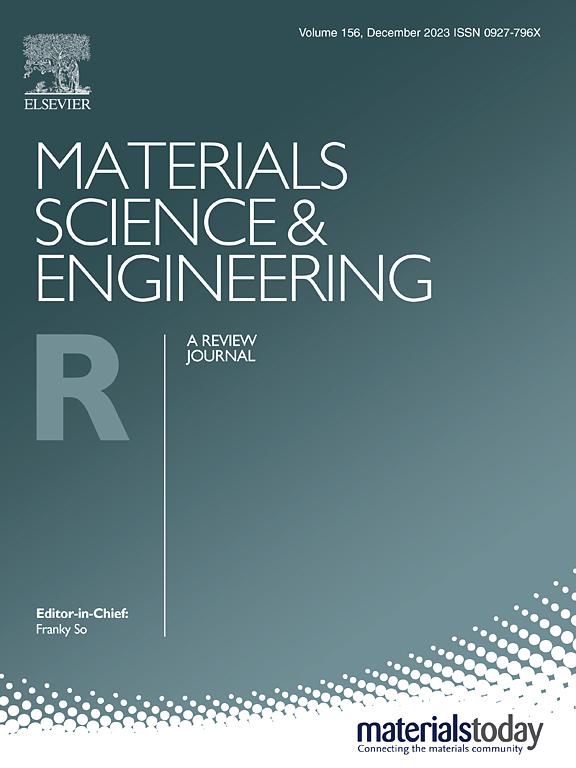A review on additive manufacturing of piezoelectric ceramics: From feedstock development to properties of sintered parts
IF 31.6
1区 材料科学
Q1 MATERIALS SCIENCE, MULTIDISCIPLINARY
引用次数: 0
Abstract
Piezoelectric ceramics are extensively used in several engineering applications in the field of sensors, actuators, energy harvesting, biomedical, and many more. Traditional ways of manufacturing piezoelectric devices result in better piezoelectric/ferroelectric performance. However, they are restricted to only simple shapes. With the widespread influence of additive manufacturing (AM), it is now possible to fabricate complex structures which were not possible by conventional technologies. In order to fabricate such complex structures with precision, it is necessary to understand in detail the factors influencing the feedstock preparation and the challenges associated with different AM technologies. With an emphasis on the most commonly used AM techniques (direct ink writing, fused filament fabrication, vat photopolymerization, binder jetting, and selective laser sintering) for fabricating ceramic parts, this review paper intends to provide a deep insight into the factors affecting the feedstock preparation as well as post-processing conditions required to develop a high-performance piezoelectric device. The summarized tables detailing the various piezoelectric ceramic compositions and additives or ingredients used in formulating a printable feedstock, along with the optimum printing and post-processing conditions, will aid the readers in developing their own printable formulations and determining the best post-processing parameters to achieve the best performance out of the fabricated piezoelectric device. The advantages and disadvantages of the AM technologies are analyzed with specific reference to piezoceramic materials and the remaining challenges that require further research are emphasized. Furthermore, with the ongoing and continuous developments in additive manufacturing of piezoelectric materials, it is expected that such advancements will progressively transition towards commercialization, with the ultimate goal of widely incorporating additively manufactured devices into practical applications.
压电陶瓷增材制造综述:从原料开发到烧结部件的性能
压电陶瓷广泛应用于传感器、致动器、能量收集、生物医学等多个工程领域。传统的压电器件制造方法可以获得更好的压电/铁电性能。但是,它们仅限于简单的形状。随着增材制造(AM)技术的广泛应用,现在可以制造出传统技术无法制造的复杂结构。为了精确地制造这种复杂结构,有必要详细了解影响原料制备的因素以及与不同 AM 技术相关的挑战。本综述论文以制造陶瓷部件最常用的 AM 技术(直接墨水写入、熔融长丝制造、大桶光聚合、粘合剂喷射和选择性激光烧结)为重点,旨在深入探讨影响原料制备的因素以及开发高性能压电器件所需的后处理条件。汇总表详细列出了用于配制可印刷原料的各种压电陶瓷成分、添加剂或配料,以及最佳印刷和后处理条件,这将有助于读者开发自己的可印刷配方,并确定最佳后处理参数,使制造的压电器件达到最佳性能。该书分析了 AM 技术的优缺点,特别是压电陶瓷材料,并强调了需要进一步研究的其余挑战。此外,随着压电材料增材制造技术的不断发展,预计这种进步将逐步向商业化过渡,最终目标是将增材制造设备广泛应用于实际应用中。
本文章由计算机程序翻译,如有差异,请以英文原文为准。
求助全文
约1分钟内获得全文
求助全文
来源期刊

Materials Science and Engineering: R: Reports
工程技术-材料科学:综合
CiteScore
60.50
自引率
0.30%
发文量
19
审稿时长
34 days
期刊介绍:
Materials Science & Engineering R: Reports is a journal that covers a wide range of topics in the field of materials science and engineering. It publishes both experimental and theoretical research papers, providing background information and critical assessments on various topics. The journal aims to publish high-quality and novel research papers and reviews.
The subject areas covered by the journal include Materials Science (General), Electronic Materials, Optical Materials, and Magnetic Materials. In addition to regular issues, the journal also publishes special issues on key themes in the field of materials science, including Energy Materials, Materials for Health, Materials Discovery, Innovation for High Value Manufacturing, and Sustainable Materials development.
 求助内容:
求助内容: 应助结果提醒方式:
应助结果提醒方式:


